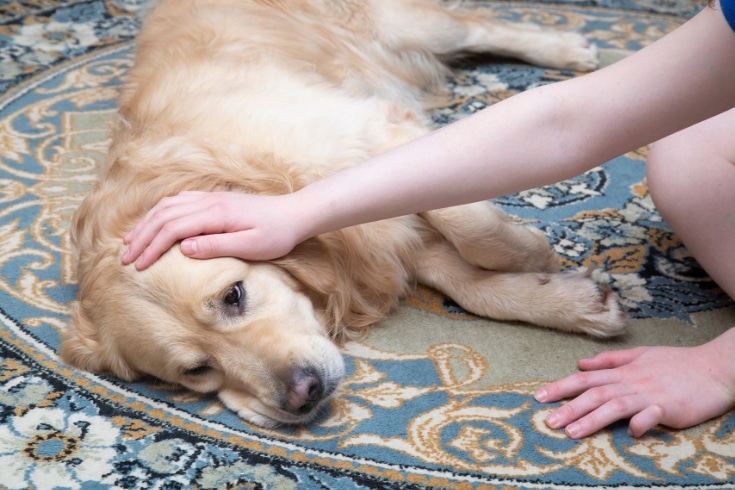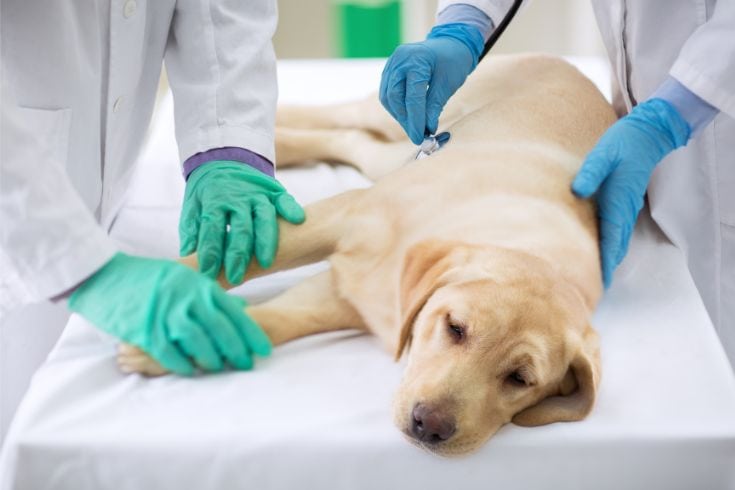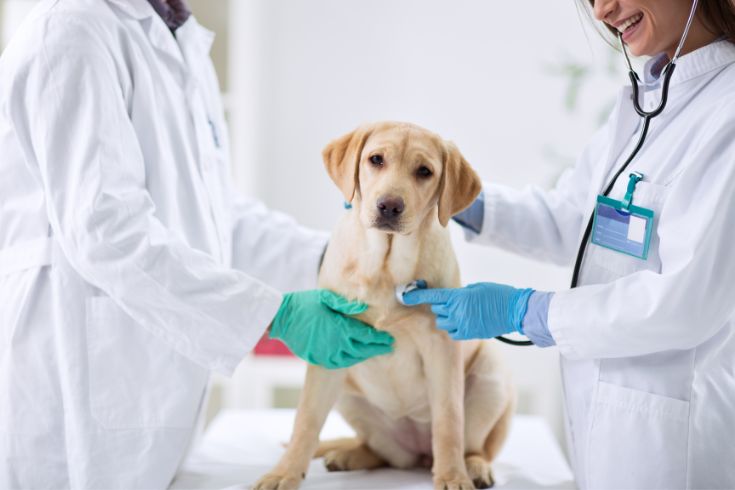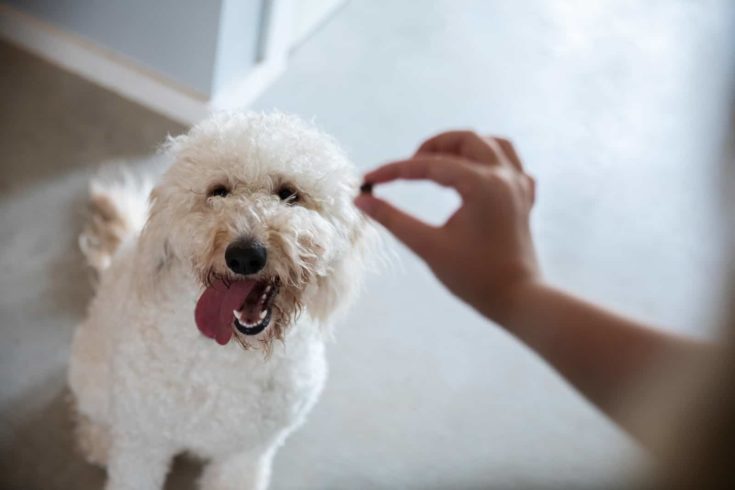Deciding when to take your dog to the vet is essential for their well-being. Visiting the vet is all part of being a pet owner, whether you have a cat, dog, hamster, or even a snake. We all want the best for our furry (and scaly) friends, so their health and well-being are always a priority. But would you know when it’s best to see the vet?
Much like deciding whether to go to the hospital or visit your GP for your own health concerns, discerning the right course of action for your pet is not always straightforward. You don’t want to trouble your vet over something minor, but you also can’t afford to overlook the signs of something potentially more serious. Given that pets can’t directly communicate their ailments, it’s often a challenging decision to make.
As you read on, you’ll find valuable tips to help clarify when a veterinary visit is necessary. By recognizing both the subtle and not-so-subtle cues, you’ll be better positioned to manage the long-term health and happiness of your furry family members.
Is Your Pet’s Behaviour Normal?


If you’re noticing changes, no matter how subtle, it could be an indication that something’s up. We all pride ourselves on knowing our pets well—you see them every day, and if they’ve grown up with you, you’d like to think you can tell normal behavior from what’s not, right?
But even for experienced pet owners, it’s easy to overlook minor shifts in behavior that might signal a problem. Learning how to spot signs of trouble is vital. Your dog might start eating less, panting more, or sleeping longer, while your cat could become more vocal, especially if they’re in pain. Every pet has their own baseline of typical behaviors, eating habits, and energy levels that you’re familiar with.
Consider what a good day looks like for your pet: their appetite, their thirst, their playfulness, and vitality. Keep an eye on how they sleep and interact with the household. Any change in these areas could be the first sign that a vet visit is needed.
Understanding what’s ‘normal’ for your pet equips you to discern when something is decidedly not. Now, let’s dive into what specific signs might suggest it’s time for a professional check-up.
What Are the Common Signs That May Require a Vet Visit?


- Changes in Appetite or Weight – If you notice a significant decrease or increase in appetite or sudden weight loss or gain this can signal various health problems. If you notice they are struggling to eat normally, such as difficulty chewing, it could be an issue with their teeth or gums.
- Difficulty Breathing – If your pet is panting excessively, coughing, or seems to struggle for breath, this can sometimes just be that your pet is too hot, such as after running around or on a hot day, but it can also be a sign of a medical emergency especially if they look agitated or have widened eyes.
- Excessive Vomiting or Diarrhoea – While occasional vomiting or diarrhoea can occur in pets, persistent or severe cases can lead to dehydration and indicate more serious conditions.
- Obvious Pain or Limping – Signs of pain such as whimpering, shaking, or reluctance to be touched, along with limping or difficulty moving, can indicate injuries, arthritis, or other issues. These are usually more obvious than other types of problems.
- Changes in Urination or Defecation – Increased frequency, straining, or pain during urination and defecation could be a problem. According to PetMD, dogs should defecate at least once a day and most animals produce a reasonable amount of urine at least every 12 hours. Any differences with this could indicate a problem.
- Unusual Behaviour – Increased aggression, sudden fearfulness, stress, or unusual lethargy can sometimes be linked to underlying illnesses that affect your pet’s physical health and mental well-being.
Whenever you notice these symptoms, it’s advisable to consult your vet promptly. Some issues may warrant an emergency vet appointment such as broken bones, severe bleeding, open wounds and, as mentioned above, difficulty breathing. You’ll need to consider that emergency appointments come at a cost and will vary depending on whether you are already registered with the vet practice.
According to leading pet insurance provider Petsure, you may need to pay a consultation fee and an out-of-hours fee, depending on the time of day – this can be as much as £59 for bank holidays and evenings before 11pm and £129 for appointments overnight between 11pm and 8am based on figures from the Animal Trust, so you’ll want to ensure it’s for emergencies only.
How Do Preventative Care and Regular Check-Ups Benefit Your Pet?


Preventative care and regular check-ups are crucial for your pet’s well-being. They enable early detection of issues, keeping small problems from becoming major concerns. During these visits, vets check overall health, dental condition, and vital organ function, while also providing vaccinations and parasite control.
This proactive approach, including discussions on nutrition and behavior, is tailored to your pet’s specific needs and is essential for a long, healthy life. In essence, these routine visits support a vibrant life and help avoid the question of when to take your dog to the vet by preventing issues wherever possible.
How Can You Help Your Pet Feel Relaxed at the Vet?
Helping your pet feel relaxed at the vet begins with your own composure—pets have a keen sense of our emotions. When you’ve decided it’s time for a vet visit, be aware it can be stressful for your pet. Here’s a list of ways you can help your pet feel more at ease during a vet visit:
- Stay Calm Yourself: Your pet can sense your emotions, so take deep breaths and remain relaxed.
- Familiar Items: Bring their favorite blanket or toy for comfort.
- Pheromone Sprays: Use pet-specific calming sprays available in pet stores.
- Practice Visits: Make some ‘just for fun’ visits to the vet to reduce anxiety associated with the location.
- Positive Reinforcement: Reward calm behavior with treats (if not restricted) and praise.
- Calming Touch: Gentle petting or massages can help reduce stress.
- Anxiety Vests: Consider a snug vest designed to calm anxious pets.
- Ear and Belly Rubs: Rubbing these areas can be soothing for some pets during examinations.
- Distract with Treats: Use treats to distract and reward them during the check-up.
- Communication with Vet: Inform the vet about your pet’s temperament and any anxiety they might have.
- Wait in Peace: Find a quiet corner in the waiting area away from other animals.
- Consistent Voice: Speak in a gentle, reassuring tone to comfort your pet.


Incorporating techniques like ear or belly rubs can be particularly soothing. And remember the power of distraction and rewards—unless advised otherwise due to a medical condition, treats can effectively direct their attention away from stressors.
Always communicate with your vet too, especially if it’s an unscheduled appointment or with someone new. Informing them about your pet’s anxiety can lead to a more tailored approach to make your pet comfortable. Staying calm, using a consistent voice, and employing these methods will not only assist in de-stressing your pet but also turn the vet visits into more positive experiences for both of you.
Make The Best Decision For You and Your Pet
Knowing when to seek veterinary care is crucial for the well-being of your pet. Recognizing your pet’s normal behavior, being alert to urgent symptoms, and ensuring regular check-ups are key steps in providing them with the best possible care. Trust your instincts; if you’re ever uncertain about a symptom’s severity, don’t hesitate to consult with your vet for peace of mind.
We urge you to stay observant and proactive with your pet’s health. When in doubt, book that vet visit—it’s always better to be safe than sorry. Your pet’s health is in your hands, so take action today and schedule their next check-up, ensuring many more happy, healthy years together.


